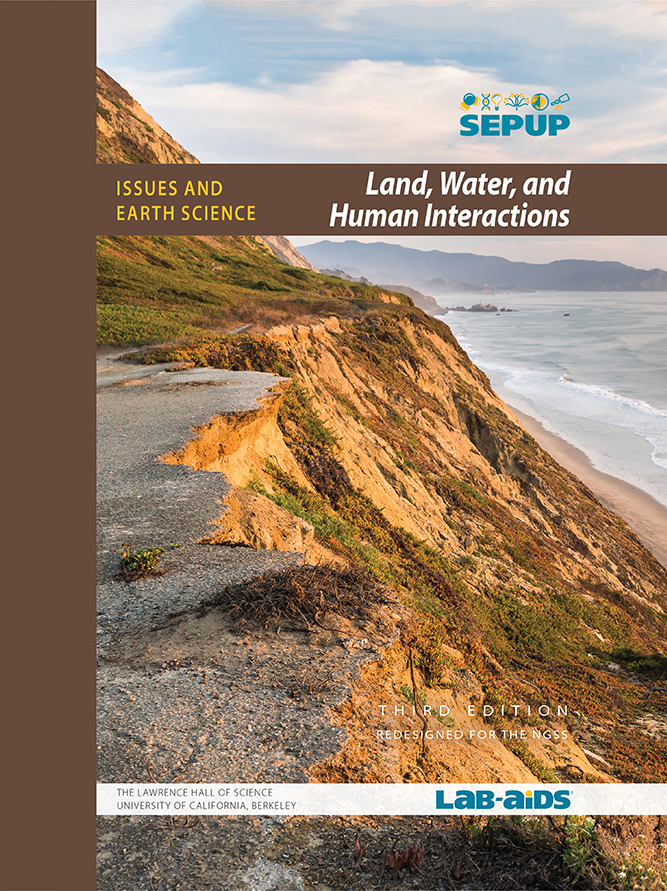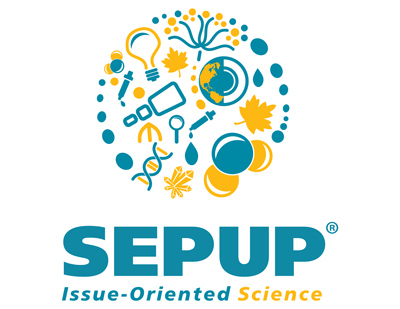Land, Water, and Human Interactions: Teacher Links

Teacher Links
Land, Water, and Human Interactions
This Land, Water, and Human Interactions unit is part of SEPUP’s Issues and Science three-year Middle School program. Each unit of the program incorporates science and engineering concepts and practices with current issues.
Interactions
Learning Pathway Diagrams for this unit:
MS-ESS2-2, MS-ESS2-4, MS-ESS3-3, MS-ETS1-1, MS-ETS1-2, MS-ETS1-3
Activity 1
Where Should We Build?
Environmental Impact Of Building Construction Can Now Be Predicted
Researchers have developed a method to evaluate in advance the environmental impacts caused during the construction of buildings.
Wetland Disturbance and Impact
The state of Maryland provides information about assessing the disturbance and impact on wetlands.
Activity 2
Does It Dissolve?
Why Is the Ocean Salty?
Why Is the Ocean Salty, but Rivers Flowing Into It Are Not?
Why Is Sea Water Salty, and Not Lake Water?
Three concise explanations of why the ocean is salty but rivers and lakes are not.
Activity 3
Water Quality
Water Quality
This home page for the United States Geological Survey (USGS) lists resources on water quality.
Water Quality Portal
The Water Quality Portal (WQP) is a cooperative service sponsored by the United States Geological Survey (USGS), the Environmental Protection Agency (EPA), and the National Water Quality Monitoring Council (NWQMC). It collects data from over 400 state, federal, tribal, and local agencies.
Activity 5
Nutrients as Contaminates
Nutrient Pollution: The Problem
An EPA page that discusses the environmental problem of nutrient pollution.
The Challenge of Tracking Nutrient Pollution 2,300 Miles
This article explains the challenge of tracking nutrient pollution along the 2,300 miles of the Mississippi.
Activity 6
Gulf of Mexico Dead Zone
Gulf of Mexico ‘dead zone’ Is the Largest Ever Measured
National Oceanic and Atmospheric Administration (NOAA) provides and article on the measurement of the largest dead zone in the world in the Gulf of Mexico.
Agricultural Runoff and the Gulf of Mexico Dead Zone
This 3-minute video explains how agricultural practices are linked to the dead zone in the Gulf of Mexico.
Activity 7
Cutting Canyons and Building Deltas
Geologic Formations: Grand Canyon
The National Park Service presents the formation of the Grand Canyon.
Activity 8
Traveling with the Water Cycle
The Water Cycle
The United States Geological Survey Water Science School explains the water cycle.
Activity 10
Making Topographical Maps
Online World Topographic Map
USA Topographic Maps
ArcGIS provides online world-wide and U.S. topographic maps.
Activity 11
Boomtown’s Topography
Mississippi Digital Map Library
This site holds a collection of historical maps of the Mississippi River.
Activity 12
Modeling Cliff Erosion
Video: Cliff Erosion Prompts Pacifica to Demolish Apartment Complex
Drone footage shows an apartment building in California that is about to tumble off an eroded cliff.
Activity 13
Weathering, Erosion, and Deposition
Erosion and Weathering
Stunning images and information on landforms made by the processes of erosion and weathering.
Activity 14
Building on the Mississippi
Katrina, 10 Years Later: Three Documentaries to Watch
A documentary looks at the effects of Hurricane Katrina ten years later.
Nashville’s Answer To Flood-Proofing Homes? Tear Them Down
Nashville provides a solution to decreasing flood damage by tearing down homes.
Mississippi Digital Map Library
This site holds a collection of historical maps of the Mississippi River.
The Challenge of Tracking Nutrient Pollution 2,300 Miles
This article explains the challenge of tracking nutrient pollution along the 2,300 miles of the Mississippi.
NOAA Ocean Explorer: Marine Ecologist
Peter Etnoyer’s pet fish had 200 babies in his aquarium when he was in elementary school. Go to this National Oceanic and Atmospheric Administration (NOAA) link to see what other events inspired this ocean explorer to become a marine ecologist.
Wetland Ecologist
Lief Sigren explains how his work as an ecologist relates to peoples’ lives and wetland ecosystems all over the world at this site sponsored by the National Institute of Environmental Health Science .
Environmental Careers for Kids
Do you love trees? Like being outdoors? Check out this site, maintained by the Wisconsin Department of Natural Resources, to see what it is like, and what you need to do to become a forester (a person who works to maintain habitats in the forest).
Grand Challenges in Engineering
Watch a short video and learn about the Grand Challenges in engineering as determined by the National Academy of Engineering.
Activity 16
Building Site Plan
How to Prevent Soil Erosion
This site provides basic information on how to prevent soil erosion during landscaping.

